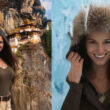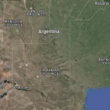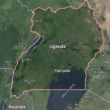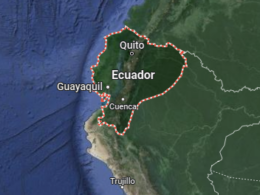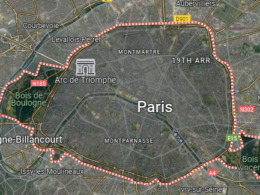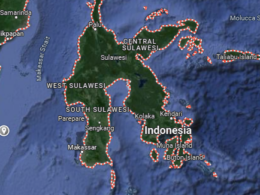Romania is home to one of the largest populations of brown bears in Europe.
The country has some of the best-preserved medieval towns in Europe, such as Sighișoara and Sibiu.
Romania has the second largest underground glacier in the world, in the Scarisoara Ice Cave.
The Romanian Athenaeum in Bucharest is a renowned concert hall and a symbol of Romanian culture.
Romania has a strong tradition of painted monasteries in Bukovina, known for their vibrant frescoes.
The Carpathian Mountains in Romania are home to Europe’s largest population of wolves and lynxes.
The Danube Delta in Romania is a UNESCO World Heritage Site and a biodiversity hotspot.
Romania has one of the most extensive cave systems in Europe, including the impressive Turda Salt Mine.
The country has a diverse cuisine influenced by Balkan, Turkish, Hungarian, and Slavic flavors.
Romania is known for its rich folklore, including stories of Dracula (inspired by Vlad the Impaler).
The Romanian language is a Romance language, closely related to Italian, Spanish, French, and Portuguese.
Romania has a tradition of celebrating Dragobete, a festival of love similar to Valentine’s Day.
The painted churches of Moldavia are UNESCO-listed for their unique architecture and frescoes.
Romania has a strong tradition of woodcarving, seen in its churches, gates, and household items.
The country is known for its extensive network of underground salt mines and caves.
Romania has one of the largest gold resources in Europe, with significant mining operations.
The traditional Romanian blouse, known as ia, is recognized as an UNESCO Intangible Cultural Heritage.
The Merry Cemetery in Maramureș is famous for its colorful tombstones depicting humorous epitaphs.
Romania has a thriving film industry, with notable directors like Cristian Mungiu and Cristi Puiu.
The country has a strong tradition of gymnastics, producing many Olympic champions.
Romania has one of the largest populations of Roma (Gypsy) people in Europe.
The Palace of the Parliament in Bucharest is one of the largest administrative buildings in the world.
Romania has a unique Easter tradition called “egg tapping,” where people compete by tapping decorated eggs.
The country has a rich tradition of folk music, including instruments like the cimbalom and pan flute.
Romania has a diverse landscape, including the Carpathian Mountains, Transylvanian Plateau, and Black Sea coast.
The Romanian Orthodox Church is the largest Christian denomination in the country.
Romania has a strong tradition of ceramics, with distinct styles from regions like Horezu and Corund.
The country has a high number of natural thermal spas, known for their healing properties.
Romania is known for its tradition of winter customs and celebrations, such as the bear dance.
The painted churches of Northern Moldavia are UNESCO World Heritage Sites for their frescoes.
Romania has a unique tradition of Martisor, celebrating the arrival of spring with red and white tokens.
The Romanian Peasant Museum in Bucharest showcases traditional Romanian culture and craftsmanship.
Romania has a rich literary tradition, with writers like Mircea Eliade and Eugène Ionesco.
The country has a strong tradition of folk art, including elaborate Easter egg decorating.
Romania is home to the Apuseni Mountains, known for their caves and karst landscapes.
The country has a significant German-speaking minority, known as the Transylvanian Saxons.
Romania has a diverse wildlife, including European brown bears, wolves, and lynxes.
The Black Sea coastline in Romania is known for its sandy beaches and resorts.
Romania has a strong tradition of wine-making, with vineyards in regions like Transylvania and Moldova.
The country has a tradition of traditional dances, such as the hora and călușari.
Romania has a unique Christmas tradition called “Colindă,” involving caroling and festive gatherings.
The country has a strong tradition of craftsmanship, including wood carving and weaving.
Romania has a rich tradition of storytelling, with myths and legends passed down through generations.
The Apuseni Mountains in Romania are known for their caves and karst landscapes.
Romania has a strong tradition of folk art, including elaborate Easter egg decorating.
The country has a significant German-speaking minority, known as the Transylvanian Saxons.
Romania has a diverse wildlife, including European brown bears, wolves, and lynxes.
The Black Sea coastline in Romania is known for its sandy beaches and resorts.
Romania has a strong tradition of wine-making, with vineyards in regions like Transylvania and Moldova.
The country has a tradition of traditional dances, such as the hora and călușari.
Romania has a unique Christmas tradition called “Colindă,” involving caroling and festive gatherings.
The country has a strong tradition of craftsmanship, including wood carving and weaving.
Romania has a rich tradition of storytelling, with myths and legends passed down through generations.
Romania is known for its impressive wooden churches in Maramureș, a UNESCO World Heritage Site.
The country has a rich tradition of handicrafts, including pottery, embroidery, and wood carving.
Romania has a strong tradition of festivals and celebrations throughout the year.
The Romanian language has preserved many Latin elements, making it unique among Slavic-influenced languages.
Romania is known for its delicious pastries and desserts, such as cozonac and papanasi.
The country has a strong tradition of herbal medicine, with many plants used for their medicinal properties.
Romania has a diverse range of traditional costumes, varying by region and occasion.
The Carpathian Mountains in Romania are home to many species of wildlife, including bears, wolves, and lynxes.
Romania has a rich tradition of theater and performing arts, with a vibrant cultural scene.
The country has a strong tradition of religious festivals and pilgrimages, particularly in Transylvania.
Romania has a diverse range of architectural styles, from medieval fortresses to Art Nouveau buildings.
The country has a rich tradition of folk tales and legends, often featuring supernatural beings like vampires.
Romania has a strong tradition of hospitality, with guests often welcomed warmly into homes.
The country has a rich tradition of folk dances, with regional variations and costumes.
Romania has a strong tradition of folk music, with instruments like the violin and cimbalom being popular.
The country has a diverse cuisine, influenced by Turkish, Hungarian, and Balkan flavors.
Romania has a strong tradition of celebrating Christmas and Easter with festive meals and customs.
**Please note that this post may contain affiliate links. When booking through one of our links, we earn a small kickback at no extra cost to you and it’s a big help to keep the site up and running.


